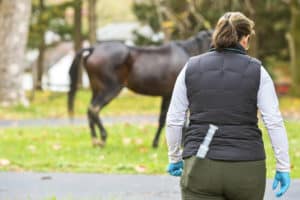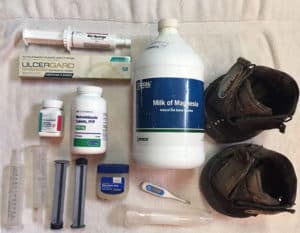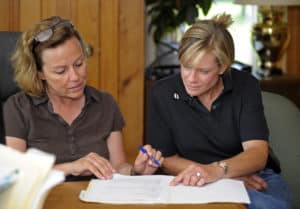Mystery Lamenesses
- Topics: Horse Sense (and Sensibility)
On my visits to veterinary clinics, schools, and research centers, one of the things I enjoy most is watching veterinarians work up lameness cases. There’s something satisfying about seeing a clinician with a practiced eye get to the bottom of what’s causing a horse to be “off,” using close observation, careful palpation, high-tech imaging, and active collaboration with colleagues.
The other side of this techie-science bit, of course, is the relationship side. I remember one owner’s expression of confusion and disappointment when her horse’s X rays showed evidence of navicular bone damage, and I saw utter disbelief and sadness in another owner’s face when a surgeon diagnosed her horse’s hind limb fracture and deemed it inoperable.
We hate to see our horses in any sort of discomfort, but as long as horses are traveling across the ground (which is considerably better than the alternative), especially in an athletic fashion, issues will arise. It’s important for us to understand what goes into a diagnosis and be prepared to understand the process the veterinarian will walk through when a horse comes up lame. The September issue boasts Part 1 of our two-part diagnosing lameness series, and you can preview that article here. Tracy Gantz, one of our experienced freelancers in California, handily walks us through lower-limb lamenesses and many of the ways practitioners draw on their experiences and exams to arrive at a diagnosis. Be sure to check this article out
Create a free account with TheHorse.com to view this content.
TheHorse.com is home to thousands of free articles about horse health care. In order to access some of our exclusive free content, you must be signed into TheHorse.com.
Start your free account today!
Already have an account?
and continue reading.

Written by:
Stephanie L. Church, Editorial Director
Related Articles
Stay on top of the most recent Horse Health news with














